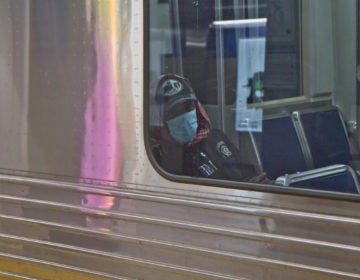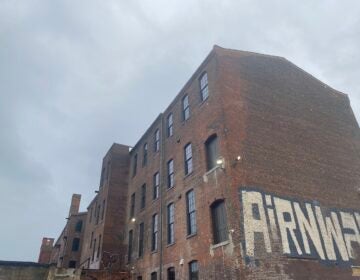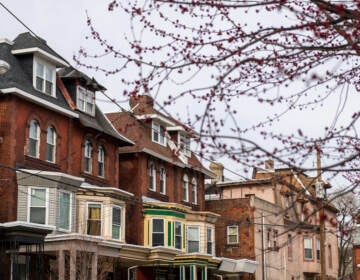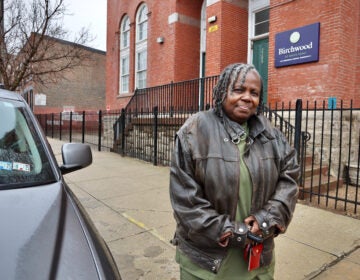Report: West Philadelphia renters face a growing risk of displacement
More than half of all renters in West Philadelphia’s District 3 struggle to pay rent. Without policy change, many could be priced out, a new report suggests.
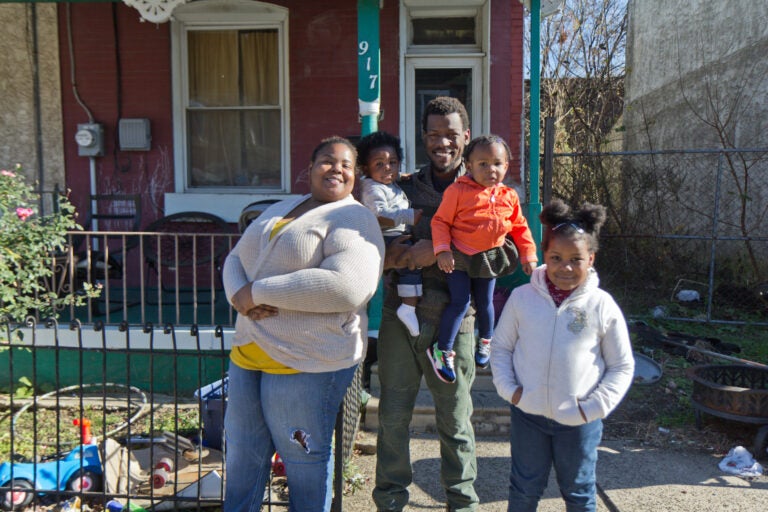
Kendra Bowden-Ponder, her husband Quan and their three children Ja’Lissa, 6, Jordyn, 1, and Kayleb, 10 months, are facing eviction. (Kimberly Paynter/WHYY)
Kendra Bowden-Ponder’s boxes are packed. The mother of three born and raised in West Philadelphia is preparing to leave the community where she has spent most of her life — and she needs to find somewhere else to go fast.
After a rough 2020 wherein she and her husband both lost their jobs due to the pandemic, the family’s landlord is evicting them from their Mill Creek home.
Bowden-Ponder said the stress of trying to find a new home is all-encompassing. Her three kids haven’t been sleeping through the night. She tries to soothe their anxieties by doing a lot of family activities like having “experiment night” where they cook a meal they’ve never tried before or having impromptu dance parties in the living room.
“We do everything we can to try to keep it as normal as possible but children know when things are off with their parents,” she said.
Bowden-Ponder lives in a duplex on a quiet block. A few trees and patches of grass line the street. Neighbors have decorated for the holidays with red ribbons and large candy canes on their porches, bringing some brightness to a block dotted with vacant homes. Even before the pandemic, the family was spending about half of their income on rent, she said.
At this point, the West Philly native is eying rentals in North Philadelphia. Moving across the city is not ideal but it’s only the option the family has.
“When we get to the new house, it’ll be better,” Bowden-Ponder said.
Bowden-Ponder is one of a growing number of West Philadelphians facing the prospect of leaving the area as rents continue to creep up while incomes stagnate or drop.
The trend is among several detailed in a new report from Third District Councilmember Jamie Gauthier’s office, the Reinvestment Fund, and Urban Spatial.
The report was commissioned by Gauthier in response to the growing affordability crisis facing working families in her district, which covers much of West Philly including Mill Creek, Cobbs Creek, Mantua and University City, where incomes tend to be higher and renovated Victorians sell fast and above the list price.
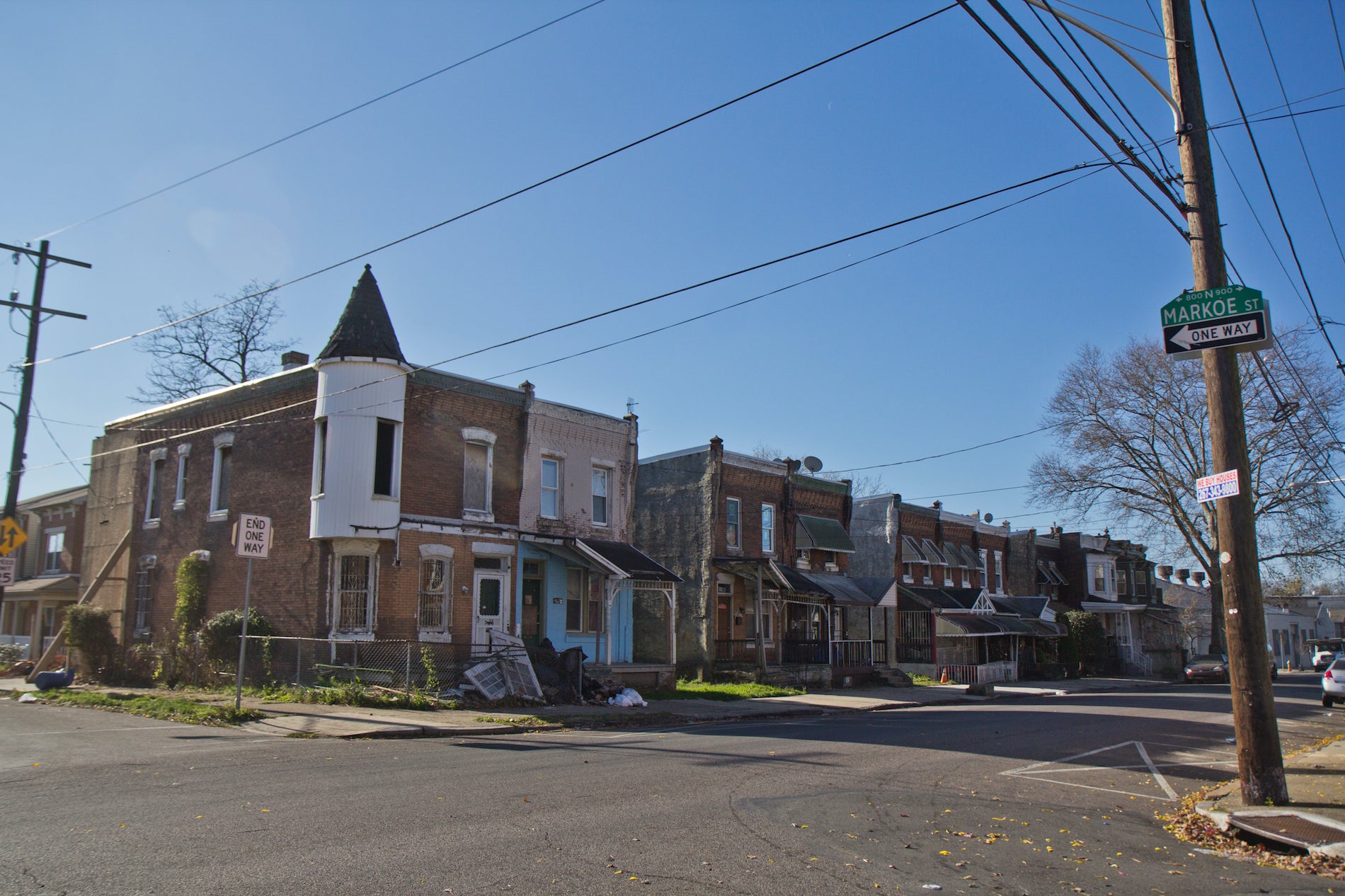
A third of the Black population gone
Between 2000 and 2016, West Philadelphia’s Black population decreased by 35% as rents rose and home prices jumped. In the years since, the trend has continued and the pandemic could speed up the cycle as service-sector industries like hospitality continue to shed workers.
The team of researchers convened by Gauthier found that more than half of all renters in the West Philadelphia district spend more than a third of their income on rent — the federal definition of cost-burdened and the housing set aside by the city as affordable remains out of reach for many of these renters. Between 2011 and 2018, the share of residents earning $35,000 to $55,000 and classified as rent-burdened grew from less than 25% to nearly 40%.
Meanwhile, new subsidized housing is usually targeted to people earning between 60 and 80% of the regional area median income of $87,400 for a household of four.
Even on the lower end, that translates to more than $1,000 per month in a district where median income hovers around $30,000 annually.
“That means absolutely nothing from an affordability perspective,” Gauthier said.
Under federal guidelines, a household earning $30,000 annually should spend no more than $750 monthly on rent.
Only 17% of reported rents in the district were less than $500, including subsidized units, and only 40% of residents could afford even that much, according to the new report.
On top of that, the supply of subsidized housing is only meeting about a quarter of the total need. There are 7,904 subsidized units in the sprawling district — including hundreds of units within West Park Apartments now slated for redevelopment by the Philadelphia Housing Authority.
Critics of gentrification often associate it with the displacement of people less affluent than neighborhood newcomers. But the phenomenon is notoriously difficult to assess. For this study, the Reinvestment Fund measured where prices were appreciating the most in relation to incomes of longtime residents, increasing the likelihood of people finding themselves priced out. Using this formula, researchers identified several areas where the risk of displacement was high, including Mantua, West Powelton, blocks adjacent to 52nd Street from Market Street to Baltimore Avenue particularly around Malcolm X Park, the West Shore neighborhood, and Cedar Park.
‘Pushing harder’
West Park sits just north of 46th and Market streets, a short walk from these gentrifying areas.
Its redevelopment is one where Gauthier as a councilperson could have some influence: City Council will have to approve any zoning changes or handovers of city land.
PHA has promised to replace all of the subsidized units one-for-one as part of a development that will also bring market-rate housing and retail to the land. Gauthier indicated she wants to see more done on the affordable housing front beyond building back the units that were there.
“Everything about that 46th and Market area says that it’s going to gentrify,” Gauthier said. “So we have to be particularly thoughtful about the public land that we have here and making sure that it could put it to use in a way that can rival the significant market forces.”
Nichole Tillman, vice president of communications, said the redevelopment plans at West Park have slowed down because of the pandemic. PHA is reviewing proposals and has not selected a developer yet.
Gauthier said she already planned to use her seat in council to fight for more affordable housing on vacant city land and regulations that mandate developers include affordable units. The report, however, helps her see holes in the city’s housing system more clearly and understand where her advocacy is needed.
“I’m going to be pushing them harder now because I have the data that backs it up around what people here can afford,” Gauthier said. “It means when I have leverage — land they want from the city — I’m pushing harder.”
Guy Laren, a developer of Constellar Corporation, owns several properties in Gaulthier’s district. He is currently doing a project for which he was awarded a low-income housing credit at 41st Street and Lancaster Avenue. The developer also said he is working with the Philadelphia Land Bank to develop city-owned vacant land at 51st and Market streets into moderate-income housing. The new homes would rise less than a block from an office building targeting entrepreneurs Laren is developing with Tayyib Smith of S&R Holdings.
He predicted Gauthier’s efforts to recruit the private sector to address the city’s affordable housing shortage would be received by demands for more subsidies.
“It’s a trade-off,” he said. “The government will have to incentivize developers to affordable projects where the lowest income groups are covered.”
In addition to the data, the District 3 report offers a strategic planning tool that makes projections about housing costs and affordability which also shows where there are housing investments and displacement. It all comes from the city’s open data so it can be replicated for other districts.
 WHYY is one of over 20 news organizations producing Broke in Philly, a collaborative reporting project on solutions to poverty and the city’s push towards economic justice. Follow us at @BrokeInPhilly.
WHYY is one of over 20 news organizations producing Broke in Philly, a collaborative reporting project on solutions to poverty and the city’s push towards economic justice. Follow us at @BrokeInPhilly.

Subscribe to PlanPhilly
WHYY is your source for fact-based, in-depth journalism and information. As a nonprofit organization, we rely on financial support from readers like you. Please give today.



